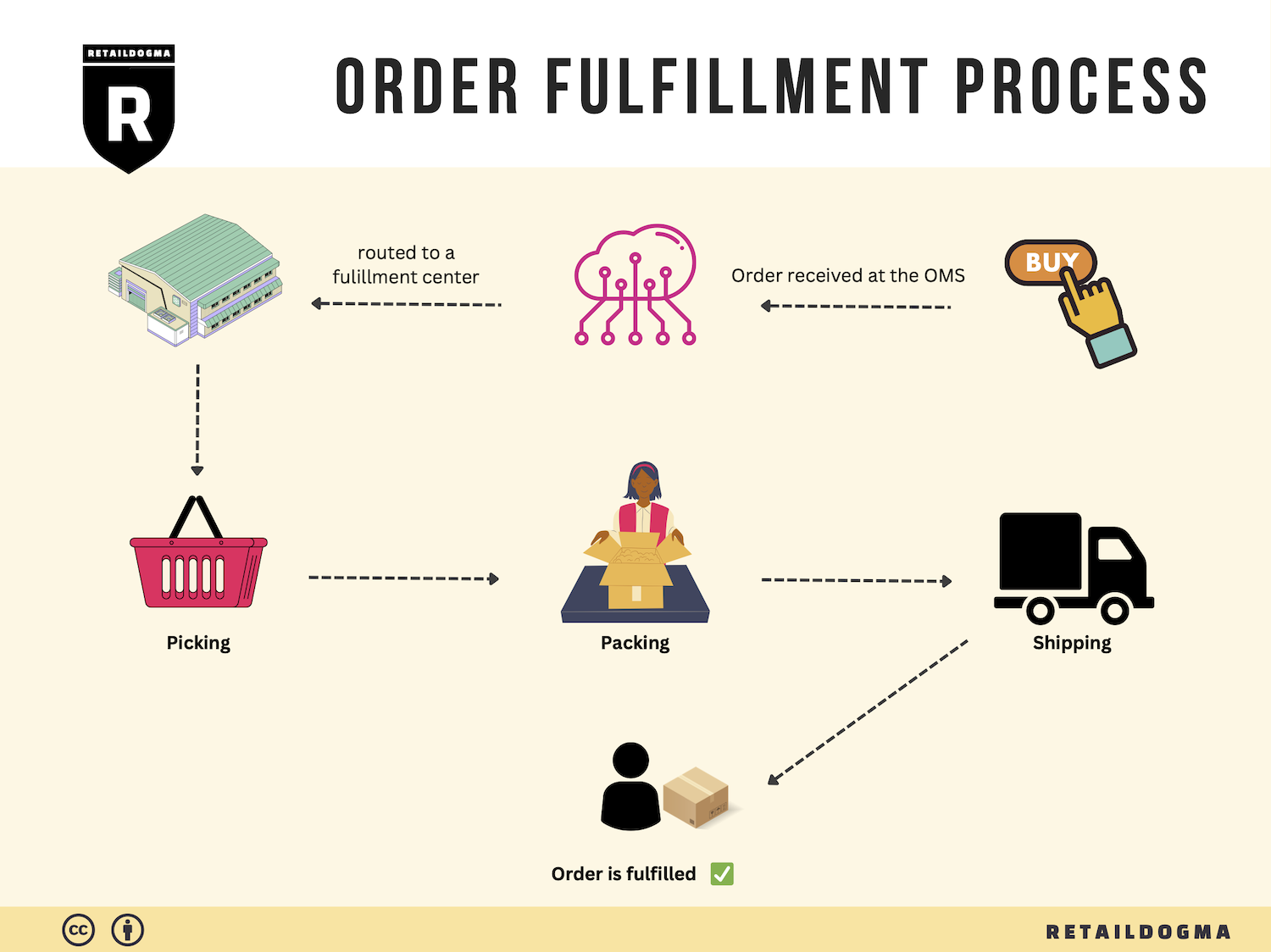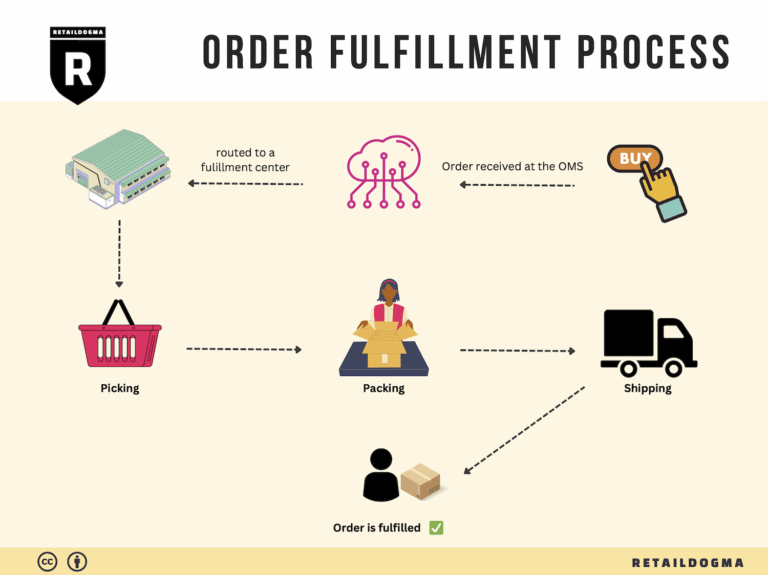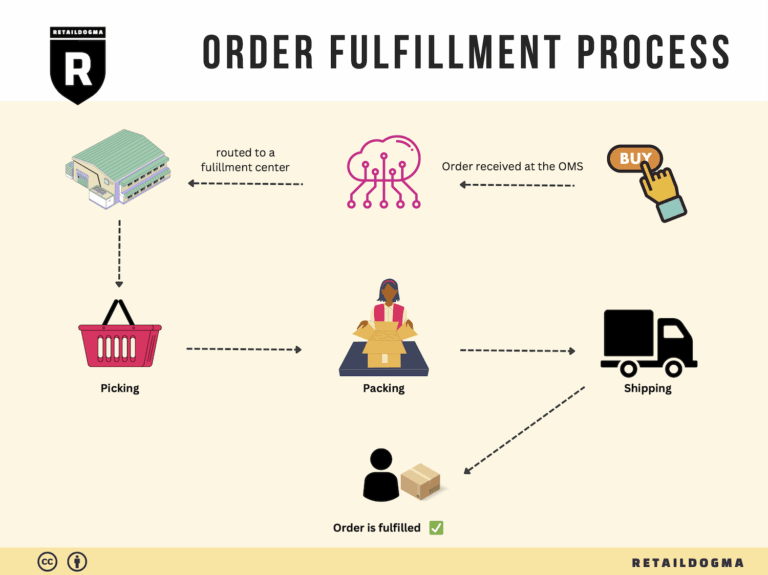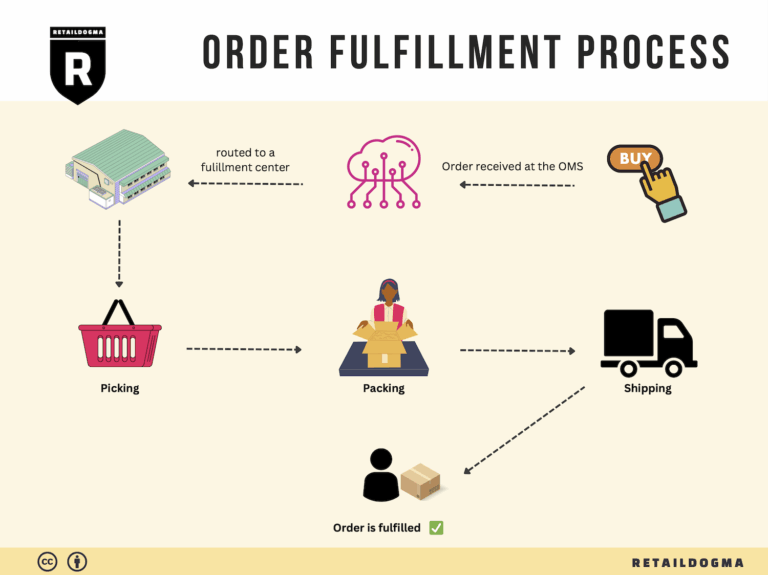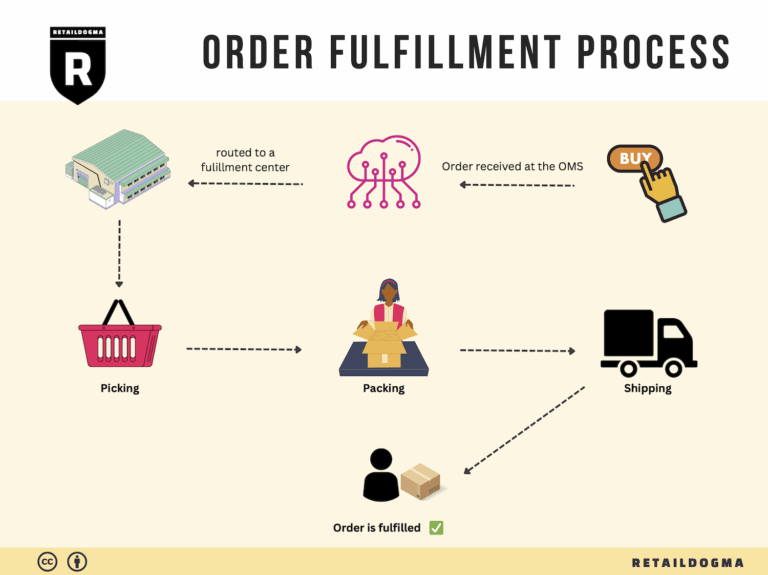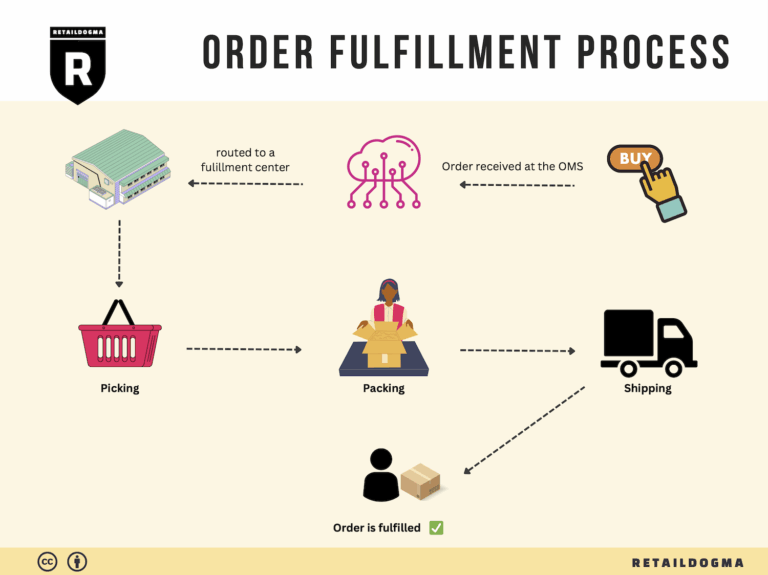Ecommerce Fulfillment Services: The Ultimate Guide (2025)
What is E-commerce Fulfillment? An Introduction for Growing Businesses
Navigating the Complexities of E-commerce Fulfillment
For many growing online businesses, the excitement of scaling sales often gives way to the daunting reality of managing logistics. As order volumes increase, the tasks of packing, shipping, and ensuring timely delivery can quickly become overwhelming. This is where understanding e-commerce fulfillment becomes crucial.
At its core, fulfillment is the process of getting a product from your warehouse or storage facility to the customer’s doorstep. It encompasses everything from receiving inventory, processing orders, picking and packing items, and finally shipping them out. For businesses aiming to thrive in the competitive online marketplace, mastering this process is essential to maintaining customer satisfaction and operational efficiency.
This guide will delve into various fulfillment models, including Third-Party Logistics (3PL) and Fulfillment by Amazon (FBA), to help you understand which option best aligns with your business needs. Each model has its own set of advantages and challenges, making it vital to assess your specific requirements and future growth plans.
We will also cover the core services associated with e-commerce fulfillment. These include inventory management, order processing, packaging, shipping, and returns handling. Understanding these services is key to optimizing your fulfillment strategy and ensuring a seamless experience for your customers.
Choosing the right fulfillment partner can significantly impact your business’s performance. We will outline the criteria to consider when evaluating potential partners, such as their operational capabilities, technology integration, geographic reach, and customer service quality.
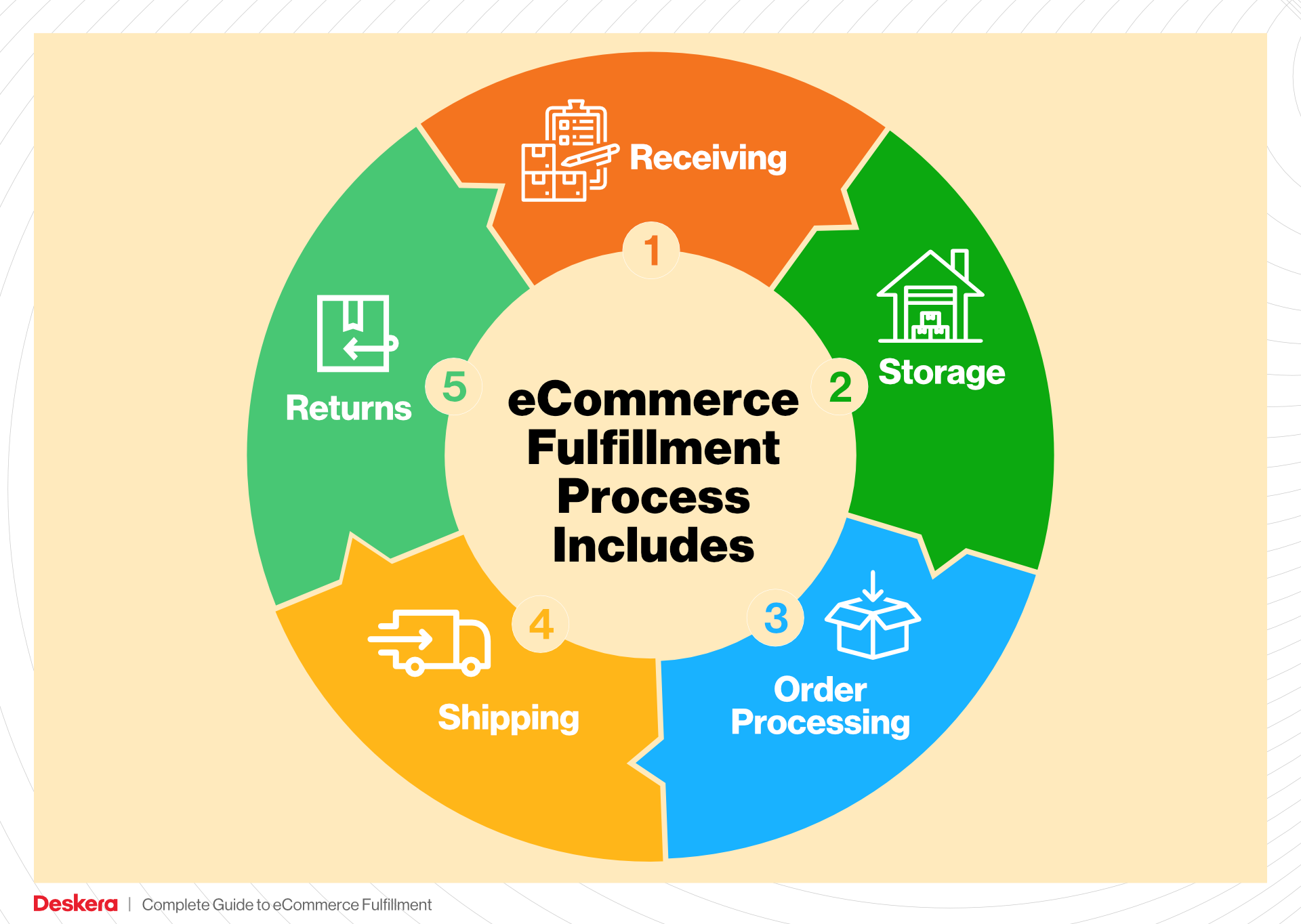
Additionally, pricing structures for fulfillment services can vary widely. We will break down common pricing models, helping you to anticipate costs and budget effectively as you scale your operations.
Ultimately, the goal of this guide is to empower your business to make informed decisions about logistics. By understanding the intricacies of e-commerce fulfillment, you can streamline your operations, enhance customer experiences, and focus on driving growth without getting bogged down by the complexities of packing and shipping. Let’s embark on this journey together, ensuring your logistics strategy aligns with your overarching business objectives.
What You’ll Learn In This Guide
- What is E-commerce Fulfillment? An Introduction for Growing Businesses
- The Order Fulfillment Process: From ‘Buy’ Button to Customer’s Door
- Comparing Fulfillment Models: In-House vs. 3PL vs. Dropshipping
- A Deep Dive into Amazon FBA: Pros, Cons, and Who It’s For
- Core Services Offered by Fulfillment Centers
- How to Choose a Fulfillment Partner: A 6-Point Checklist
- Understanding Fulfillment Pricing: A Breakdown of Common Fees
- Frequently Asked Questions (FAQs) about Fulfillment
- Conclusion: Is Outsourcing Fulfillment the Right Move for Your Business?
- Important Disclaimer
The Order Fulfillment Process: From ‘Buy’ Button to Customer’s Door
1. Receiving Inventory
The first step in the order fulfillment process begins when products arrive at the fulfillment center. During this phase, inventory is received from manufacturers or suppliers and checked for accuracy against purchase orders. This step is crucial for ensuring that the right quantity and quality of goods are accepted.
Importance: Proper receiving helps minimize discrepancies, which can lead to stockouts or excess inventory. It also establishes a baseline for inventory management, as accurate records are essential for tracking stock levels and planning for future orders.
Key Term: SKU (Stock Keeping Unit) – Each product is assigned a unique SKU, which is vital for inventory tracking and management. This identifier allows businesses to efficiently manage their stock and facilitate quick retrieval during subsequent steps in the fulfillment process.
2. Warehouse Storage
Once inventory is received and verified, it is then stored in the fulfillment center. This step involves organizing products in a way that maximizes space and facilitates efficient order processing. Items may be stored on shelves, pallets, or in bins based on their size, weight, and frequency of sales.
Importance: Effective warehouse storage directly impacts the speed and efficiency of the picking process. A well-organized warehouse reduces the time spent searching for items, thus improving overall order turnaround time. Additionally, it helps in maintaining optimal inventory levels, which is crucial for meeting customer demand without overstocking.
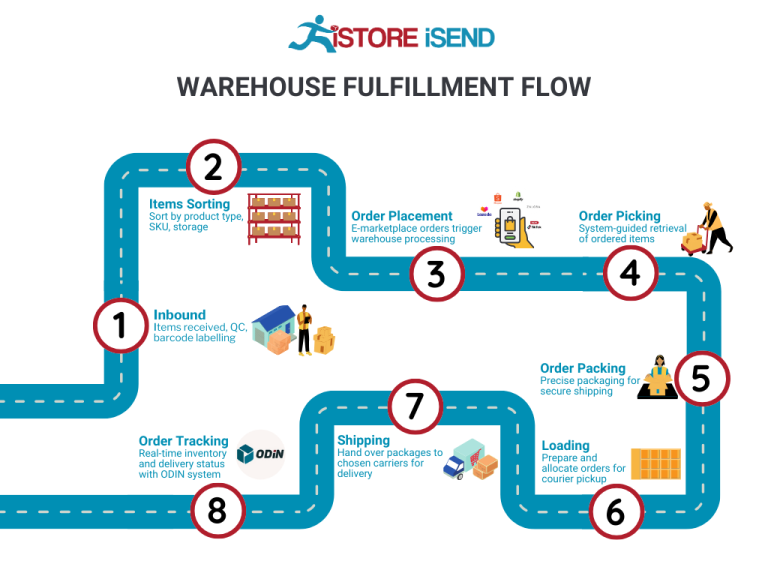
Key Term: Inventory Management System (IMS) – A robust IMS helps track stock levels, locations, and movements within the warehouse. This technology is essential for managing inventory efficiently and ensuring products are readily available for order fulfillment.
3. Order Picking
When a customer places an order, the next step is order picking, where items are retrieved from their storage locations in the warehouse. Warehouse staff use pick lists, which detail the items and quantities needed for each order, to guide their picking process.
Importance: This step is critical as it directly affects order accuracy and fulfillment speed. Errors in picking can lead to customer dissatisfaction and increased return rates. Efficient picking processes can significantly enhance the overall customer experience by ensuring that orders are fulfilled correctly and promptly.
Key Term: Pick Lists – These documents outline the specific items to be picked for each order, including their locations within the warehouse. Utilizing pick lists streamlines the picking process, ensuring that staff can quickly locate and retrieve products.
4. Order Packing
After items have been picked, they are brought to the packing station where they are prepared for shipping. This process involves packing the items securely to prevent damage during transit and labeling the packages with shipping information, including tracking numbers.
Importance: Proper packing is vital for protecting products and ensuring they reach customers in excellent condition. Additionally, accurate labeling is essential for effective shipping and tracking, allowing both the business and the customer to monitor the order’s journey.
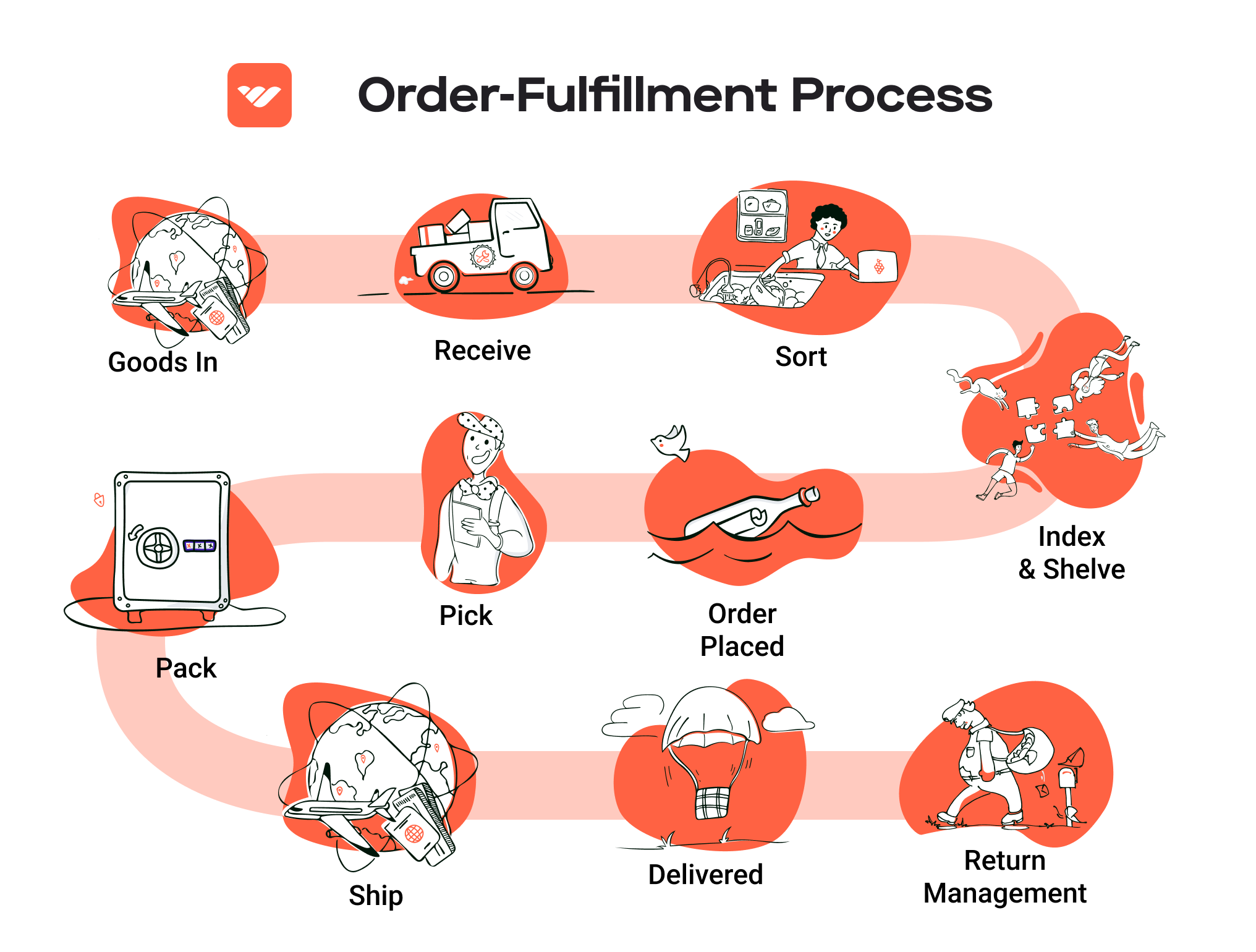
Key Term: Packing Slip – This is a document included in the package that lists the items inside. It serves as a confirmation for the customer that the correct items were shipped and is an essential part of the customer experience.
5. Shipping & Delivery
The final step in the order fulfillment process involves shipping the packed orders to customers. This step includes selecting the appropriate shipping carrier, preparing shipping documents, and arranging for the pickup or drop-off of packages.
Importance: Timely and reliable shipping is crucial for customer satisfaction and retention. With the rise of e-commerce, consumers increasingly expect quick delivery times. Efficient shipping processes can enhance a brand’s reputation and encourage repeat purchases.
Key Term: Last Mile Delivery – This term refers to the final leg of the shipping journey, where packages are delivered from a transportation hub to the final customer. Optimizing last mile delivery is essential for meeting customer expectations for fast and reliable shipping.
In summary, mastering each step of the order fulfillment process is vital for e-commerce businesses aiming to scale operations effectively. By focusing on these key areas, companies can enhance efficiency, reduce costs, and improve customer satisfaction, ultimately driving growth in a competitive market.
Comparing Fulfillment Models: In-House vs. 3PL vs. Dropshipping
Fulfillment Models Comparison
| Model | Who Handles Inventory | Best For (Business Stage) | Key Advantage | Key Disadvantage |
|---|---|---|---|---|
| In-House Fulfillment | The business itself | Established businesses with stable demand | Full control over inventory and processes | High operational costs and resource demands |
| Third-Party Logistics (3PL) | A third-party provider | Growing businesses looking to scale | Reduced overhead and increased focus on core business | Less control over inventory management |
| Dropshipping | Supplier or manufacturer | Startups and small businesses with limited capital | Low upfront investment and no inventory risk | Lower profit margins and reliance on suppliers |
In-House Fulfillment
In-house fulfillment involves managing the entire logistics process internally. This includes inventory storage, order processing, packaging, and shipping. Businesses that choose this model typically have the infrastructure and resources to handle these operations. This model is best suited for established businesses with stable demand, as it allows for complete control over inventory management and fulfillment processes. The key advantage of in-house fulfillment is the ability to maintain quality control and ensure that customer expectations are met. However, it comes with significant drawbacks, including high operational costs and the need for substantial human and technological resources. Additionally, as the business scales, the complexity of managing logistics internally can become overwhelming, leading to potential inefficiencies.
Third-Party Logistics (3PL)
Third-party logistics (3PL) providers offer outsourced logistics services, managing inventory, warehousing, and shipping on behalf of businesses. This model is ideal for growing businesses that want to scale without the burden of managing logistics internally. The primary advantage of using a 3PL is the reduction in overhead costs, as businesses can leverage the provider’s infrastructure and expertise. This allows companies to focus on their core business activities, such as marketing and product development. However, a notable disadvantage is the loss of control over inventory management and fulfillment processes. Businesses must rely on their 3PL partner to maintain service quality and accuracy. Additionally, integrating systems with a 3PL can pose challenges and may require investment in technology to ensure seamless communication.
Dropshipping
Dropshipping is a fulfillment model where the retailer does not hold any inventory. Instead, when a customer places an order, the retailer purchases the product from a third party (usually a manufacturer or wholesaler) who then ships it directly to the customer. This model is particularly attractive for startups and small businesses with limited capital, as it requires minimal upfront investment and eliminates the risk associated with unsold inventory. The key advantage of dropshipping is the ability to offer a wide range of products without the financial burden of stocking inventory. However, the main disadvantage is the typically lower profit margins, as retailers must pay wholesale prices to suppliers. Additionally, reliance on suppliers can lead to issues with inventory availability, shipping times, and product quality, which can ultimately affect customer satisfaction.
Conclusion
Choosing the right fulfillment model depends on various factors, including business size, resources, and growth aspirations. Each model has distinct advantages and disadvantages that can impact operational efficiency and customer satisfaction. For established businesses with the resources to manage logistics, in-house fulfillment can offer control and quality assurance. For those looking to scale without the overhead, a 3PL provides a strategic solution, while dropshipping presents a low-risk entry point for new entrepreneurs. Understanding these models can help e-commerce businesses make informed decisions that align with their long-term goals and operational capabilities.
A Deep Dive into Amazon FBA: Pros, Cons, and Who It’s For
Understanding Fulfillment by Amazon (FBA)
Fulfillment by Amazon (FBA) is a service provided by Amazon that allows e-commerce sellers to store their products in Amazon’s fulfillment centers. When a customer orders a product, Amazon handles the entire fulfillment process, including storage, packaging, shipping, and customer service. This service has become a cornerstone for many e-commerce businesses looking to scale their operations, as it leverages Amazon’s vast logistics network and customer trust.
How FBA Works
-
Product Listing and Inventory: Sellers create product listings on Amazon and send their inventory to Amazon’s fulfillment centers. Each product must comply with Amazon’s guidelines, including packaging and labeling requirements.
-
Storage: Once received, products are stored in Amazon’s warehouses. Amazon uses sophisticated inventory management systems to track stock levels and product locations.
-
Order Fulfillment: When a customer places an order, Amazon takes care of picking, packing, and shipping the product. This includes using Amazon’s advanced logistics to ensure fast delivery, often within one to two days, especially for Amazon Prime members.
-
Customer Service: Amazon also manages customer inquiries and returns, providing a seamless experience for buyers. This can relieve sellers of the burden of customer service, allowing them to focus on other aspects of their business.
-
Multi-Channel Fulfillment: Sellers can use FBA not just for sales on Amazon but also for orders from their own websites or other sales channels. This allows for a unified inventory management system across multiple platforms.
Pros of Using FBA
1. Prime Eligibility
Products fulfilled by Amazon are automatically eligible for Amazon Prime, making them more attractive to millions of Prime members who expect fast and free shipping. This can significantly boost sales and visibility.
2. Customer Trust
Amazon is synonymous with reliability. By using FBA, sellers benefit from Amazon’s reputation for excellent service and customer satisfaction. This trust can lead to increased conversion rates and customer loyalty.
3. Multi-Channel Fulfillment
FBA allows sellers to fulfill orders from various sales channels, not just Amazon. This flexibility helps businesses streamline their operations and manage inventory more efficiently.
4. Logistics and Shipping Expertise
Amazon’s vast logistics network means that sellers can leverage their shipping capabilities without having to invest in their own infrastructure. Amazon handles everything from packaging to shipping, which can reduce operational costs and time.
5. Simplified Returns
Amazon’s established return process can enhance customer satisfaction. Sellers benefit from Amazon’s efficient handling of returns, which can be a significant pain point in e-commerce.
Cons of Using FBA
1. High Fees
While FBA provides numerous benefits, it comes with various fees, including storage fees and fulfillment fees. For businesses with lower margins, these costs can quickly add up and eat into profits.
2. Strict Inventory Rules
Amazon has stringent rules regarding inventory management, including limitations on certain types of products and requirements for labeling and packaging. Failure to comply can result in additional fees or penalties.
3. Commingling Risks
When products are commingled, it means that your inventory is mixed with that of other sellers. This can lead to potential issues, such as receiving returns for products that aren’t yours or facing issues with counterfeit products being associated with your brand.
4. Loss of Control
Using FBA means handing over a significant part of your customer experience to Amazon. Sellers have less control over how their products are stored, handled, and shipped, which can be a concern for brands focused on maintaining a specific image or experience.
5. Inventory Management Challenges
While Amazon manages logistics, sellers still need to effectively manage inventory levels to avoid running out of stock or incurring long-term storage fees for unsold items.
Who is FBA Best For?
Fulfillment by Amazon is particularly advantageous for:
-
Small to Medium-Sized Businesses: Companies looking to scale without investing heavily in logistics can leverage FBA to reach a wider audience efficiently.
-
New E-commerce Entrepreneurs: Startups can benefit from the credibility of Amazon and its logistical capabilities, allowing them to focus on marketing and product development rather than fulfillment.
-
Brands with High Demand Products: Sellers with products that have consistent demand can maximize the benefits of FBA by ensuring they are consistently in stock and eligible for Prime.
-
Multi-Channel Sellers: Businesses that sell on multiple platforms can streamline their operations by utilizing FBA for order fulfillment across all channels.
-
Sellers Focused on Growth: If your goal is to grow quickly and reach a larger audience, FBA can provide the infrastructure necessary to support rapid expansion without the operational headaches.
In conclusion, while Fulfillment by Amazon offers a powerful tool for e-commerce businesses to scale and streamline operations, it is essential to weigh the pros and cons carefully. Understanding how FBA aligns with your business model and goals can help you make informed decisions that support your growth strategy.
Core Services Offered by Fulfillment Centers
Inventory Management & Warehousing
Inventory management and warehousing are foundational services provided by fulfillment centers. This involves the systematic tracking and storage of products to ensure that an e-commerce business can meet customer demand without overstocking or running out of items.
What It Is:
Fulfillment centers utilize advanced inventory management systems that allow businesses to maintain real-time visibility of their stock levels. This includes the receiving, storing, and organizing of inventory in a manner that optimizes space and accessibility. The process often employs techniques like barcode scanning and RFID technology, which streamline inventory tracking and minimize errors.
Benefits to E-commerce Businesses:
1. Enhanced Visibility: Businesses gain real-time insights into their inventory levels, helping to prevent stockouts and overstock situations.
2. Cost Efficiency: By optimizing storage space and inventory turnover, fulfillment centers can reduce costs associated with excess inventory and storage fees.
3. Improved Order Fulfillment Rates: Accurate inventory management allows for faster order processing, leading to improved customer satisfaction through timely deliveries.
Pick and Pack Services
Pick and pack services are integral to the order fulfillment process, where products are selected from the warehouse and prepared for shipment.
What It Is:
When an order is placed, fulfillment centers utilize their inventory management systems to “pick” the items from their stored locations. Once items are gathered, they are “packed” into appropriate shipping containers, ensuring that they are secure and ready for transit. This process may include adding packing slips, promotional materials, and protective packaging.
Benefits to E-commerce Businesses:
1. Speed and Efficiency: Automated systems can significantly reduce the time taken to pick and pack orders, which is crucial for meeting customer expectations for fast delivery.
2. Accuracy: With trained staff and advanced technology, fulfillment centers minimize the risk of errors in order fulfillment, leading to fewer returns and higher customer satisfaction.
3. Scalability: As a business grows, fulfillment centers can easily scale their pick and pack operations to handle increased order volumes without the need for additional in-house resources.
Kitting and Assembly
Kitting and assembly services allow e-commerce businesses to offer customized products or bundles that enhance their market appeal.
What It Is:
Kitting involves assembling individual items into ready-to-sell packages or kits. This may include bundling complementary products together or creating unique gift sets. The assembly process can also involve adding promotional items or custom branding to the packaging.
Benefits to E-commerce Businesses:
1. Enhanced Customer Experience: Offering kitted products can attract customers looking for convenience, creating a more appealing shopping experience.
2. Inventory Management: By managing kitting at a fulfillment center, businesses can streamline their inventory processes, reducing the complexity of managing multiple SKUs.
3. Increased Average Order Value (AOV): Bundling products together can encourage customers to purchase more items at once, boosting overall sales.
Returns Management (Reverse Logistics)
Returns management, also known as reverse logistics, is a critical service provided by fulfillment centers that focuses on handling product returns efficiently.
What It Is:
Returns management encompasses the processes involved when customers return items. This includes receiving returned products, inspecting them for damage, restocking items that are in good condition, and processing refunds or exchanges. A robust returns management system ensures that the reverse flow of goods is handled smoothly and efficiently.
Benefits to E-commerce Businesses:
1. Customer Retention: Efficient returns processes foster customer loyalty, as buyers are more likely to shop with businesses that have hassle-free return policies.
2. Cost Control: By managing returns effectively, fulfillment centers can help minimize the costs associated with processing returns, including shipping and restocking fees.
3. Data Insights: Returns management can provide valuable insights into customer preferences and product quality issues, helping businesses improve their offerings and reduce future returns.
In summary, partnering with a fulfillment center that offers comprehensive services like inventory management, pick and pack, kitting, and returns management can significantly enhance an e-commerce business’s efficiency and customer satisfaction. By leveraging these core services, businesses can focus on growth and scaling operations while ensuring that their logistics processes are handled with expertise and care.
How to Choose a Fulfillment Partner: A 6-Point Checklist
Location & Warehouse Network
Importance: The geographical location of your fulfillment partner can significantly impact shipping costs and delivery times. A strategically located warehouse network allows for quicker transit times to your customer base, enhancing overall customer satisfaction.
Questions to Ask:
– Where are your warehouses located, and how do they align with my customer demographics?
– How do you handle shipping to regions that may be underserved or have higher shipping costs?
– Can you provide insights into your shipping times and costs based on various locations?
Technology & Integrations
Importance: In today’s e-commerce landscape, technology plays a crucial role in streamlining operations and ensuring efficient order processing. A fulfillment partner with robust technology and seamless integrations can help you manage inventory, track orders, and analyze performance metrics effectively.
Questions to Ask:
– What warehouse management system (WMS) do you use, and how does it support real-time inventory tracking?
– Can your system integrate with my existing e-commerce platform (e.g., Shopify, WooCommerce, Amazon)?
– What reporting and analytics capabilities do you offer to help me optimize my operations?
Specializations (e.g., Cold Storage, Oversized Items)
Importance: Different products require different handling and storage solutions. If your business involves specialized items like perishables, hazardous materials, or oversized products, it’s essential to partner with a fulfillment center that has experience and capabilities in those areas.
Questions to Ask:
– Do you have the capability to handle specialized products, such as cold storage for perishables or oversized items?
– What certifications or compliance measures do you have in place for handling specialized goods?
– Can you provide case studies or examples of how you’ve managed similar products for other clients?
Scalability & Capacity
Importance: As your business grows, your fulfillment needs will evolve. A partner that can scale with you ensures that you won’t face logistical bottlenecks during peak seasons or when entering new markets.
Questions to Ask:
– How do you manage capacity during peak seasons, and what is your strategy for scaling operations?
– What is your current capacity, and how do you plan to expand your facilities or services in the future?
– Can you accommodate sudden spikes in order volume, and what processes do you have in place to manage that?
Pricing and Contracts
Importance: Understanding the pricing structure and contract terms is crucial to ensure that your fulfillment partnership remains profitable. Transparent pricing helps you budget effectively and avoid unexpected costs.
Questions to Ask:
– What is your pricing model (e.g., per order, per item, storage fees), and are there any hidden fees I should be aware of?
– How do you handle costs associated with returns, order cancellations, or changes in inventory levels?
– What are the terms of the contract, and is there flexibility for renegotiation as our business needs change?
Customer Support & Reviews
Importance: Excellent customer support is vital for resolving issues swiftly and maintaining operational efficiency. Additionally, researching reviews and testimonials can provide insights into the reliability and quality of service your potential partner offers.
Questions to Ask:
– What customer support channels do you offer (e.g., phone, email, chat), and what are your response times?
– Can you provide references or case studies from current or past clients?
– How do you handle issues or disputes that may arise during our partnership?
Conclusion
Choosing the right fulfillment partner is a critical decision that can significantly affect your e-commerce business’s efficiency and customer satisfaction. By carefully evaluating these six key areas—Location & Warehouse Network, Technology & Integrations, Specializations, Scalability & Capacity, Pricing and Contracts, and Customer Support & Reviews—you can make an informed decision that aligns with your business goals and growth strategies. Always remember that a successful partnership not only enhances your logistics but also contributes to a better overall customer experience, ultimately driving your business forward.
Understanding Fulfillment Pricing: A Breakdown of Common Fees
Initial Setup Fees
When partnering with a fulfillment center, the initial setup fees are often the first costs incurred. These fees typically cover the integration of your e-commerce platform with the fulfillment center’s systems, including inventory management, order processing, and shipping logistics. The setup process may also involve configuring your product catalog, establishing shipping preferences, and training staff on your specific requirements.
The calculation of initial setup fees can vary significantly based on the complexity of your operations and the fulfillment provider’s pricing structure. For instance, basic integrations may cost a few hundred dollars, while more complex setups, especially those involving custom API integrations or specialized processes, can range from $1,000 to $5,000 or more.
Receiving Fees
Receiving fees are charged when your inventory arrives at the fulfillment center. These fees cover the costs associated with unloading, inspecting, and inventorying your products. The receiving process ensures that the correct quantities are accounted for and that the products meet quality standards.
Typically, receiving fees are calculated on a per-unit basis or by the hour, depending on the fulfillment center’s policies. For example, a fulfillment center might charge $0.50 per unit for receiving, or a flat rate of $100 per hour for labor. Businesses should also be aware of potential additional fees for damaged goods or discrepancies between expected and actual inventory.
Storage Fees (per pallet/bin)
Storage fees are incurred for keeping your inventory within the fulfillment center. These fees are crucial for understanding your holding costs, which can significantly impact your overall profitability. Storage fees are generally calculated on a monthly basis, either per pallet or per bin.
For example, a fulfillment center may charge $15 per pallet per month or $5 per bin per month. The specific fee structure can vary widely based on the location of the fulfillment center, the size and weight of your products, and the overall demand for storage space. It’s essential for e-commerce businesses to regularly monitor their inventory levels and turnover rates to avoid excessive storage fees.
Pick & Pack Fees (per item/order)
Pick and pack fees are charged for the labor involved in retrieving items from storage and preparing them for shipment. This process includes picking the items from the shelves, packing them into boxes, and labeling them for delivery. Understanding how pick and pack fees are structured is vital for e-commerce businesses, as these costs can accumulate quickly with high order volumes.
Typically, pick and pack fees are calculated per item or per order. For instance, a fulfillment center might charge $1.00 per item picked and packed or a flat rate of $3.00 per order, regardless of the number of items. It is crucial to clarify whether the fee covers both picking and packing or if they are charged separately. Businesses should also consider the potential for volume discounts as order sizes increase.
Shipping Fees
Shipping fees cover the cost of transporting packages from the fulfillment center to the end customer. These fees can be influenced by several factors, including the shipping method (standard, expedited, overnight), package dimensions, weight, and destination.
Shipping fees are typically calculated based on the carrier’s rates, which can vary significantly. For example, using carriers like UPS or FedEx may yield different costs compared to postal services. Many fulfillment centers provide discounted shipping rates through partnerships with major carriers, which can help businesses save on logistics costs. It’s important to evaluate shipping options regularly to ensure that you are using the most cost-effective methods for your business.
Tips for Getting an Accurate Quote
-
Understand Your Needs: Before reaching out for quotes, clearly outline your fulfillment requirements, including inventory volume, product dimensions, and expected order frequency. This information will help fulfillment centers provide more accurate pricing.
-
Request Detailed Breakdowns: When soliciting quotes, ask for a detailed breakdown of all fees involved. This should include initial setup, receiving, storage, pick and pack, and shipping fees. Understanding each component helps identify potential hidden costs.
-
Compare Multiple Providers: Don’t settle for the first quote you receive. Compare multiple fulfillment centers to gauge the market rates and services offered. This can also provide leverage when negotiating terms.
-
Inquire About Discounts: Many fulfillment centers offer volume discounts based on order size or long-term commitments. Ask about any potential savings opportunities that could lower your overall costs.
-
Review Contract Terms: Before signing any agreements, ensure you fully understand the terms and conditions, especially around fee structures and potential increases. This can help prevent unexpected charges down the line.
By understanding these common fulfillment pricing models and actively seeking competitive quotes, e-commerce businesses can effectively manage their logistics costs while scaling their operations.
Frequently Asked Questions (FAQs) about Fulfillment
1. What is the Amazon Fulfillment Center KRB6?
The Amazon Fulfillment Center KRB6, located at 4200 Ferry Rd, Aurora, IL, is part of Amazon’s extensive logistics network. It specializes in receiving, storing, and shipping products directly to customers. This facility plays a vital role in ensuring timely delivery and efficient order processing, meeting the high expectations of e-commerce consumers.
2. How does KRB6 support my e-commerce business?
KRB6 allows e-commerce businesses to leverage Amazon’s vast logistics infrastructure, which can significantly enhance shipping speed and reduce delivery times. By utilizing this fulfillment center, businesses can focus on growth and product development while Amazon handles storage, packing, and shipping.
3. What is the difference between a warehouse and a fulfillment center?
While both warehouses and fulfillment centers store products, their purposes differ. A warehouse primarily focuses on long-term storage of goods, often for bulk supply chains. In contrast, a fulfillment center is optimized for processing and shipping individual customer orders quickly and efficiently, enabling faster delivery to consumers.
4. What is a Third-Party Logistics Provider (3PL)?
A Third-Party Logistics Provider (3PL) is a service that offers logistics and supply chain management services to businesses. This can include warehousing, order fulfillment, transportation, and inventory management. By partnering with a 3PL, e-commerce businesses can outsource their logistics needs, allowing them to focus on core operations and scale effectively.
5. How much do fulfillment services cost at KRB6?
Fulfillment service costs can vary based on several factors, including storage fees, order processing fees, and shipping costs. For specific pricing related to KRB6, businesses should contact Amazon directly or consult their pricing guidelines available on the Amazon Seller Central platform.
6. What types of products can I send to KRB6 for fulfillment?
KRB6 can handle a wide range of products, including consumer goods, electronics, clothing, and more. However, there are restrictions on certain items, such as hazardous materials or perishable goods. It’s essential to review Amazon’s prohibited items list and guidelines before sending products.
7. How does KRB6 ensure fast delivery?
KRB6 utilizes advanced inventory management systems and strategic inventory placement to minimize shipping distances. By storing products closer to customers, Amazon can fulfill orders quickly, often within one to two days, which is crucial in today’s fast-paced e-commerce environment.
8. What technology is used in the KRB6 fulfillment process?
Amazon employs a variety of technologies at KRB6, including robotics, artificial intelligence, and sophisticated warehouse management systems. These technologies streamline operations, enhance accuracy in order processing, and improve overall efficiency in the fulfillment process.
9. How do I track my orders fulfilled by KRB6?
Order tracking is facilitated through Amazon’s Seller Central platform. E-commerce businesses can monitor the status of their shipments, from processing to delivery, ensuring transparency and enabling effective communication with customers regarding their order status.
10. Can I manage my inventory remotely for products stored at KRB6?
Yes, Amazon provides tools through the Seller Central platform that allow businesses to manage their inventory remotely. Users can view stock levels, adjust listings, and forecast inventory needs based on sales trends, enabling proactive inventory management even from a distance.
Conclusion: Is Outsourcing Fulfillment the Right Move for Your Business?
Evaluating the Benefits of Outsourcing Fulfillment
Outsourcing fulfillment can be a transformative decision for e-commerce businesses aiming to scale effectively. By leveraging a fulfillment service, businesses can save significant time, allowing them to focus on strategic growth areas such as product development and marketing. Instead of managing complex logistics, your team can dedicate more resources to enhancing customer relationships and expanding market reach.
Scalability is another critical advantage. Fulfillment centers like Amazon’s KRB6 can adapt to fluctuating demand, ensuring that you can handle surges in orders without the need for significant capital investment in warehousing and staffing. This flexibility is vital in today’s fast-paced e-commerce environment, where consumer expectations for rapid delivery are at an all-time high.
Moreover, partnering with a fulfillment expert provides access to specialized knowledge and technology that can optimize your logistics operations. Experienced staff manage inventory, ensuring accuracy and efficiency, while advanced systems enhance order tracking and minimize shipping errors. This not only improves your service level but also builds customer loyalty through consistent, reliable delivery experiences.
However, the success of outsourcing fulfillment hinges on selecting the right partner. It’s essential to evaluate potential fulfillment services based on their expertise, technology, and capacity to align with your business goals. A well-chosen partner can propel your growth, while a mismatched one can hinder progress.
Take Action
To determine if outsourcing fulfillment is the right move for your business, conduct a thorough audit of your current shipping processes. Analyze your order volumes, delivery times, and operational bottlenecks. This evaluation will provide clarity on whether a fulfillment partner can enhance your logistics strategy and support your business objectives. Don’t hesitate to explore options that could streamline your operations and elevate your customer experience.
Important Disclaimer
⚠️ Important Disclaimer
The information in this guide is for educational purposes. Fulfillment services, pricing, and platform features change frequently. Always conduct your own due diligence and consult with providers directly before making business decisions.
